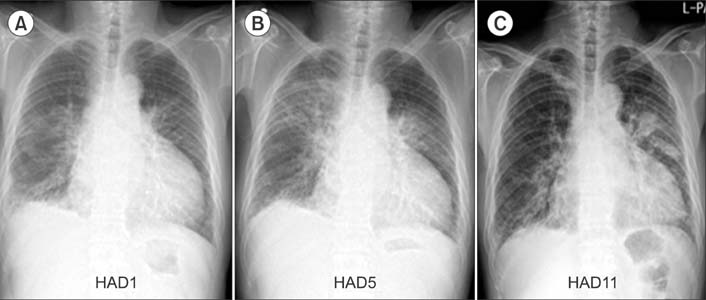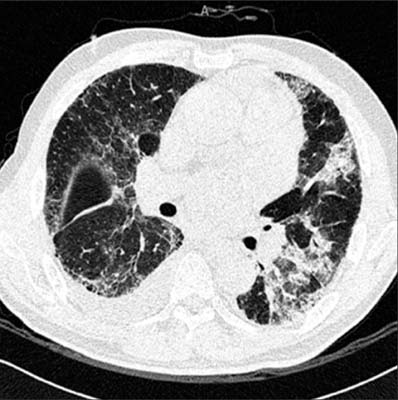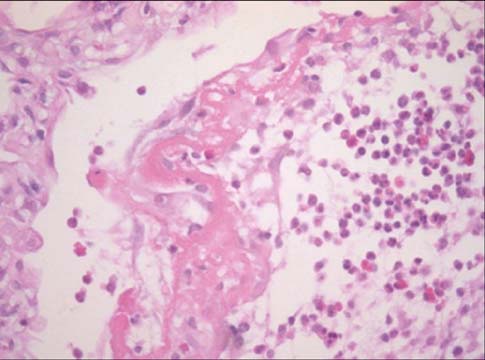Tuberc Respir Dis.
2015 Jul;78(3):258-261. 10.4046/trd.2015.78.3.258.
Loeffler's Syndrome Induced by Ingestion of Urushiol Chicken
- Affiliations
-
- 1Division of Respiratory-allergy, Department of Internal Medicine, Soonchunhayng University Bucheon Hospital, Soonchunhynag University College of Medicine, Bucheon, Korea. junehyuk@schmc.ac.kr
- KMID: 2320652
- DOI: http://doi.org/10.4046/trd.2015.78.3.258
Abstract
- Eosinophilic lung diseases are heterogeneous disorders characterized by varying degrees of pulmonary parenchyma or blood eosinophilia. Causes of eosinophilic lung diseases range from drug ingestion to parasitic or fungal infection as well as idiopathic. The exact pathogenesis of eosinophilic lung disease remains unknown. Urushiol chicken can frequently cause allergic reactions. Contact dermatitis (both local and systemic) represents the most-common side effect of urushiol chicken ingestion. However, there has been no previous report of lung involvement following urushiol chicken ingestion until now. A 66-year-old male was admitted to our hospital with exertional dyspnea. Serial chest X-ray revealed multiple migrating infiltrations in both lung fields, with eosinophilic infiltration revealed by lung biopsy. The patient had ingested urushiol chicken on two occasions within the 2 weeks immediately prior to disease onset. His symptoms and migrating lung lesions were resolved following administration of oral corticosteroids.
Keyword
MeSH Terms
Figure
Reference
-
1. Park SD. Herb medicine-induced adverse effects in dermatological field. J Korean Med Assoc. 2005; 48:325–332.2. Allen JN, Davis WB. Eosinophilic lung diseases. Am J Respir Crit Care Med. 1994; 150(5 Pt 1):1423–1438.3. Choi DC. Eosinophilic lung diseases: diagnosis and treatment. Korean J Med. 2009; 76:274–281.4. Shim IK, Choi YJ, Lee SJ, Lee HW, Choi GS, Kim HK, Suh KS. A case of acute generalized exanthematous pustulosis with patterns of Septic Shock. Korean J Med. 2011; 81:802–806.5. Won TH, Seo PS, Park SD, Kim DL, Park JH. Clinical features in 147 patients with systemic contact dermatitisdue to the ingestion of chicken boiled with Japanease lacquer tree. Korean J Dermatol. 2008; 46:761–768.6. Kanner RE, Hammar SP. Chronic eosinophilic pneumonia. Ultrastructural evidence of marked immunoglobulin production plus macrophagic ingestion of eosinophils and eosinophilic lysosomes leading to intracytoplasmic Charcot-Leyden crystals. Chest. 1977; 71:95–98.7. Yoon JH, Lee JW, Kim JE, Kim DH, Park SH, Kim WJ, et al. Two cases of acute generalized exanthematous pustulosis induced by ingestion of lacquer chicken. Korean J Asthma Allergy Clin Immunol. 2012; 32:131–135.8. Jeong YJ, Kim KI, Seo IJ, Lee CH, Lee KN, Kim KN, et al. Eosinophilic lung diseases: a clinical, radiologic, and pathologic overview. Radiographics. 2007; 27:617–637.9. Veeraraghavan S, Latsi PI, Wells AU, Pantelidis P, Nicholson AG, Colby TV, et al. BAL findings in idiopathic nonspecific interstitial pneumonia and usual interstitial pneumonia. Eur Respir J. 2003; 22:239–244.10. Biederer J, Schnabel A, Muhle C, Gross WL, Heller M, Reuter M. Correlation between HRCT findings, pulmonary function tests and bronchoalveolar lavage cytology in interstitial lung disease associated with rheumatoid arthritis. Eur Radiol. 2004; 14:272–280.11. Meyer KC, Raghu G, Baughman RP, Brown KK, Costabel U, du Bois RM, et al. An official American Thoracic Society clinical practice guideline: the clinical utility of bronchoalveolar lavage cellular analysis in interstitial lung disease. Am J Respir Crit Care Med. 2012; 185:1004–1014.12. Wells AU. The clinical utility of bronchoalveolar lavage in diffuse parenchymal lung disease. Eur Respir Rev. 2010; 19:237–241.
- Full Text Links
- Actions
-
Cited
- CITED
-
- Close
- Share
- Similar articles
-
- Epidemiologic Study on Systemic Contact Dermatitis Due to Ingestion of Rhus
- A Case of Systemic Allergic Contact Dermatitis with Erythema Multiforme-like Eruptions Due to Urushiol
- A Case of Stevens-Johnson Syndrome with Acute Renal Failure Induced by Rhus-Chicken Ingestion
- A Case of Cerebral Infarction Following Ingestion of Urushiol
- A Case of Loeffler's Endocarditis Associated with Churg-Strauss Syndrome




